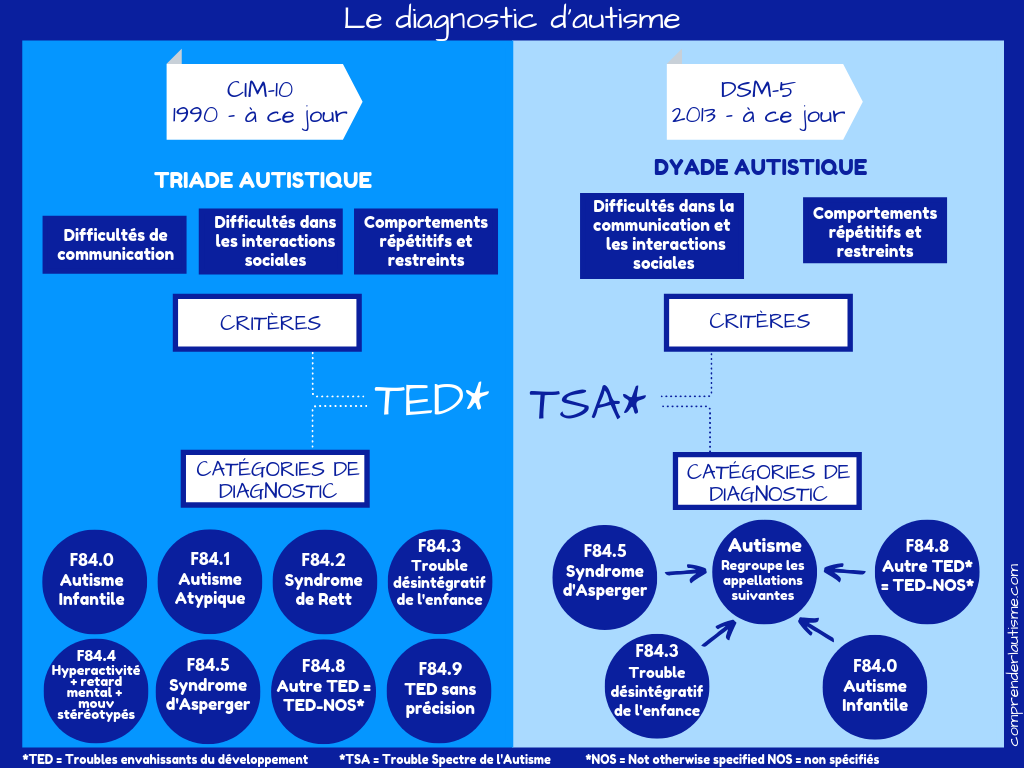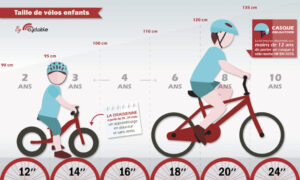In this article, we take a look at the advantages and disadvantages diagnostic tools for autism, with an emphasis on the CARS (Children's Autism Rating Scale). We will examine the strengths of this method, as well as its limitations, in order to better understand its usefulness in the assessment of this complex disorder.
Autistic Asperger's: learning to live with this difference - It starts today
[arve url="https://www.youtube.com/embed/7tRQphVT7Ys "/]
What's the point of an autism diagnosis?
The benefits of an autism diagnosis is multiple. Firstly, it enables identify and recognize people with autismThis is essential if they are to receive the support and guidance they need. Early diagnosis is particularly important, as it enables early intervention and appropriate care from an early age.
A diagnosis of autism also makes it possible to inform and raise public awareness about this neurodevelopmental condition. The media can play an essential role in disseminating accurate, objective information about autism, helping to improve understanding and reduce prejudice and discrimination.
A diagnosis of autism can also be beneficial in terms of research. By identifying and grouping individuals with autism, it is possible to conduct more targeted studies and research on this specific population. This can contribute to a better understanding of the causes and mechanisms of autism, as well as to the development of new therapeutic approaches.
Finally, an autism diagnosis is also important for autistic people themselves. It can provide answers to their questions about their characteristics and differences. It can also give them access to specific services and rights linked to their condition, such as educational or professional accommodations, financial aid, or support adapted to their specific needs.
In conclusion, an autism diagnosis has many benefits, both for people with autism and for society as a whole. It contributes to a better recognition and understanding of this condition, as well as improving the quality of life of autistic people.
What's the best way to deal with autism?
What's the best way to deal with autism?
Autism is a neurodevelopmental disorder that affects a person's communication, social interaction and behavior. A number of approaches are available to ensure better management of autism.
1. Early intervention : It is crucial to detect autism as early as possible, so that early intervention can begin. This makes it possible to offer services adapted to the child's needs from an early age, thus promoting his or her overall development.
2. Special education : People with autism often benefit from educational support tailored to their specific needs. This can include individualized educational programs, personalized learning strategies and visual aids to facilitate understanding.
3. Behavioral therapy : Behavioral therapy approaches, such as Applied Behavior Analysis (ABA), are widely used in the management of autism. These therapies aim to help autistic individuals acquire new social skills, improve communication and reduce problem behaviors.
4. Alternative and augmented communication : Some people with autism may have difficulty communicating verbally. In such cases, the use of visual aids, pictograms or assistive communication devices can be very beneficial in promoting their expression and understanding.
5. Social integration : Encouraging the social integration of people with autism is essential to their development and well-being. This can include group activities, school inclusion programs and community initiatives to raise awareness of autism.
It's important to note that the best treatment for autism may vary from person to person, depending on their individual needs. It is therefore essential to work closely with healthcare professionals specializing in autism to determine the best approach for each individual.
In conclusion, multidisciplinary care involving early intervention, specialized education, behavioral therapies, alternative and augmentative means of communication and social integration promotes a better quality of life for people with autism.
What tests are used to diagnose autism?
Tests for diagnosing autism are essential for identifying this neurodevelopmental condition in affected individuals. Here are some of the tests commonly used in the autism diagnosis process:
1. ADI-R (Autism Diagnostic Interview-Revised) : This is a semi-structured interview with the parents or legal guardians of the person suspected of having autism. It explores different areas of development and behavior to determine the presence of autistic features.
2. ADOS (Autism Diagnostic Observation Schedule) : This is a direct observation of the person's social behavior, communication and interactions. This tool enables professionals to detect the characteristic signs of autism.
3. Standardized assessment scales : various scales are used to assess autistic behaviours. These include the PDD-MRS (Pervasive Developmental Disorders - Multiple Response System) scale and the CARS (Childhood Autism Rating Scale).
4. Development assessment : Assessment of a child's overall development can also be an important indicator for the diagnosis of autism. Tests such as the M-CHAT (Modified Checklist for Autism in Toddlers) can be used to screen young children for early signs of autism.
It's important to note that the process of diagnosing autism is complex and must be carried out by qualified healthcare professionals, such as psychiatrists, psychologists specializing in autism or neurologists. These tests are only part of the overall assessment process, and must be interpreted by experts in order to arrive at an accurate diagnosis.
Can a neuropsychologist diagnose autism?
Yes, a neuropsychologist can diagnose autism. Diagnosing autism requires a thorough assessment of a person's cognitive, social and behavioral abilities. Neuropsychologists are health professionals with specialized training in the assessment of brain functions and brain-related behaviors.
The process of autism diagnosis by a neuropsychologist usually involves in-depth clinical interviews with the person concerned, as well as those close to him or her. It may also involve standardized psychological tests and questionnaires to gather precise information on autistic features.
Neuropsychologists often use tools such as the ADI-R (Autism Diagnostic Interview - Revised) and the ADOS-2 (Autism Diagnostic Observation Schedule - 2nd Edition).which are assessments specifically designed to diagnose autism. These tools gather detailed information on the social behaviors, communication and restricted, repetitive interests characteristic of autism.
It is important to note that diagnosis of autism must be carried out by qualified and trained professionals. In addition to neuropsychologists, other healthcare professionals such as psychiatrists and clinical psychologists can also diagnose autism.
In conclusion, a neuropsychologist can play a key role in diagnosing autism, thanks to his or her expertise in assessing brain functions and brain-related behaviors.
In conclusion, the CARs (CARS Autism Rating Scale) has both advantages and disadvantages in the field of autism diagnosis. On the one hand, this tool offers a global and standardized assessmentThis makes it easier to identify behaviours characteristic of autism in the individuals being assessed. It also provides relevant information on various dimensions of autism, including social communication, repetitive and restricted behaviors, and sensory problems.
However, CARS also has a number of limitations. It requires in-depth clinical assessment by a professional trained in its use, which can be restrictive in terms of time and human resources. In addition, it may be subject to a degree of subjectivity in the interpretation of observed behaviors, which can influence results. Finally, it does not take into account the cultural or individual particularities of the people being assessed, which may limit its validity in certain cases.
Despite these limitations, CARS remains a useful tool in the diagnosis of autism, offering a systematic assessment of behaviors characteristic of this condition. It is therefore recommended to use it in combination with other assessment tools and methods to obtain a complete and accurate diagnostic evaluation.








